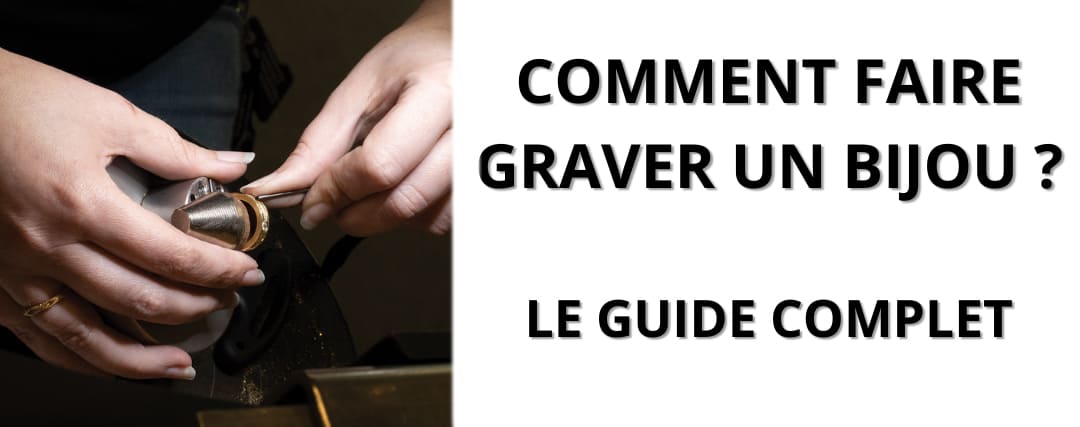One of the most timeless and beloved ways to add a personal touch to jewelry is to engrave meaningful messages or symbols. In this article, we want to shed light on the exciting world of jewelry engraving and how you can personalize yours.
Personalizing your jewelry can add depth and meaning to your pieces. It can transform a simple gift into a unique token of love, a celebration of a special moment or a tribute to a loved one. Each inscription tells a story, encapsulates a memory, or carries a secret message known only to the bearer or a privileged few. Whether it's a name, a special date, a quote or a symbol, engraving your jewelry can make it an extension of your personality and experiences.
Next, we'll take a look at the intricacies of jewelry engraving, selecting the perfect piece for engraving, design considerations, different engraving techniques, how to find the right professional for the job, and how to take care of your engraved jewelry.
Understanding Jewelry Engraving
To truly appreciate art and the unique character it can add to your pieces, it is essential to understand what jewelry engraving involves and its historical significance.
What is jewelry engraving?
Basically, jewelry engraving is a technique used to inscribe letters or decorative designs onto the surface of a piece of jewelry. This can be done either by hand, using various tools to cut directly into the material, or with advanced machines that use laser technology for greater precision and consistency. The choice between hand and machine engraving often depends on the complexity of the design, the material of the jewelry, and personal preference for a more traditional or modern look.
Brief History of Jewelry Engraving
Jewelry engraving has a rich and varied history dating back thousands of years. Ancient civilizations, from the Egyptians to the Romans, used engraving techniques to record important events, indicate ownership, or grant blessings and protection. Jewelry decorated with intricate engravings was also considered status symbols.
Fast forward to the Middle Ages and the Renaissance, the art of engraving became more refined and detailed, often used to decorate religious artifacts and personal ornaments with elaborate designs and inscriptions.
In the modern era, while methods have evolved with technological advancements, the essence of jewelry engraving remains the same: to personalize and add an extra touch of meaning to jewelry. Today, engraved jewelry is mainly used to celebrate an event or pay tribute to someone special to us.
The different types of jewelry engraving
Jewelry engraving is not a one-size-fits-all solution. There are several types to choose from, depending on the design, the material of the jewelry and the desired final effect. Some common types of engraving include:
- Relief engraving: This is a technique where the background is cut out, leaving the design or lettering in relief on the surface of the jewelry.
- Intaglio engraving: as opposed to relief engraving, this method involves carving the pattern into the jewelry so that it is embedded beneath the surface.
- Laser engraving: using high-temperature lasers, this modern technique allows for extremely precise and complex designs. It is also a contactless process, which reduces the risk of damaging the jewelry.
- Hand engraving: This traditional method involves using a hand tool known as a chisel to manually cut the design into the surface. It requires great skill and gives a unique artistic and handmade feel.
Each of these techniques has its own charm and unique applications. Now let's see how to choose the right engraving technique for your jewelry.
How to choose the perfect piece for engraving?
Choosing the right piece to engrave is equivalent to choosing the right canvas for your painting. The size, shape, and material of the part can all influence the end result. Let's take a look at the key factors to consider when choosing the perfect piece for engraving.
Suitable materials for engraving
The material of your jewelry plays an important role in the engraving process. Harder materials like gold, silver, platinum, and stainless steel are ideal for engraving because they can withstand the process without being damaged. On the other hand, softer materials like pewter or certain types of natural stone may not be ideal for engraving, as they could become damaged or worn over time.
The best types of jewelry to engrave
Almost any type of jewelry can be engraved, but some lend themselves more easily to the process. Rings are a popular choice for engraving, especially to commemorate special occasions like weddings or anniversaries. Bracelets and pendants also provide enough space for longer messages or intricate designs.
If you're looking for something subtle, you could have a pair of cufflinks or a watch engraved. Remember that the size and flatness of the part will affect the amount and type of engraving that can be done.
Considerations When Choosing Your Part
Before choosing a room, there are a few things to consider:
- Space: Make sure the room has enough space for the design or message you want to engrave.
- The Purpose: Consider the occasion or purpose of the piece. Is it a gift, an everyday accessory or a souvenir for a special event?
- Design: Will the design or message you have chosen complement the room? The engraving should enhance the beauty of the piece and not distort it.
- Personal Preference: Ultimately, the piece should reflect your taste or the taste of the recipient.
Choosing the right piece to engrave is the first step to creating a unique and personalized object. Next, we will see how to design your engraving and choose the right technique.
Designing your engraving
Designing your jewelry engraving is where you can really let your creativity shine. This is the most personal part of the process and will define the overall look of the room. Here's what to consider when designing your engraving:
Importance of personalized messages
A personalized message can turn a beautiful piece of jewelry into a treasured keepsake. It could be a name, a special date, a favorite quote or a meaningful phrase that has meaning to you or the recipient. When choosing your message, consider its meaning and make sure it fits into the space available on the jewelry.
Choosing the Right Font for Engraving
The font you choose for your engraving can significantly affect its readability and overall aesthetic. Although script fonts can add a touch of elegance, they can be more difficult to read if the text is small. On the other hand, simpler fonts like Arial or Times New Roman may lack the flourish of script fonts, but they are clean, classic, and easy to read even at smaller sizes. Some engravers can also offer custom fonts or lettering styles, adding a unique touch to your piece.
Symbols and other design elements
In addition to or instead of text, you may consider including symbols or other design elements in your engraving. It could be anything from a heart to represent love, a paw print for a pet lover, or even a simple line drawing or logo. Keep in mind, however, that more intricate designs require more space and may not be possible on smaller jewelry.
Checking spelling and accuracy
This goes without saying, but it's crucial to check the spelling and accuracy of your message before engraving it. Engraving is usually permanent, and while some errors can be corrected, they are often difficult and can potentially damage the part. It is also important to check that dates or numbers are correct, especially if they are significant, such as a birthday or anniversary.
Designing your engraving is a fun and creative process. It allows you to add a personal touch that makes the piece unique or a meaningful gift for someone special. Now let's take a look at how to choose the right engraving technique to bring your design to life.
How to choose the right engraving technique?
Choosing the right engraving technique can have a significant impact on the quality and appearance of your final piece. Each method has its own characteristics, advantages and disadvantages. Let's look at some common techniques to help you make an informed decision.
Understand the different engraving techniques
As we briefly touched on previously, there are several engraving techniques to consider, each with their nuances.
- Relief engraving: the engraver removes the material around the drawing, leaving the pattern in relief. This technique can create stunning, tactile designs that stand out.
- Intaglio engraving: This is a technique where the design is engraved into the surface, creating a recessed effect. It is the opposite of relief engraving, and is often used for detailed and complex designs.
- Laser engraving: This method uses a laser to etch the design into the material. It is perfect for complex, detailed designs and materials that are difficult to engrave by hand.
- Hand Engraving: This traditional method uses a hand-held tool known as a chisel to manually cut the design into the surface. Although it requires a highly skilled craftsman, the result is a unique, handmade design that adds an extra level of craftsmanship to your piece.
Match technique with equipment
Not all engraving techniques are suitable for all types of materials. For example, laser engraving may not work well on some natural stones or delicate materials due to the heat generated by the laser. On the other hand, hand engraving might be too much work for harder materials like stainless steel.
The skill and experience of the engraver also comes into play. Some may excel at hand engraving, while others specialize in laser engraving. It is important to discuss your options with the engraver to find the best match for your piece.
Advantages and disadvantages of each engraving technique
Each engraving method has its advantages and disadvantages.
Hand engraving, for example, gives your piece a unique, handcrafted feel, but it is labor intensive and may not be as precise as machine engraving.
Laser engraving offers precision and consistency, especially for complex designs, but it is not suitable for all materials and can seem a little impersonal.
Embossed and intaglio engraving techniques, while stunning, can be more expensive due to the additional labor and skills required.
Ultimately, the right engraving technique depends on your specific piece, material, design, and personal preference. In the next part, we will guide you in finding the right professional to help you bring your vision to life.
How to find the right professional for jewelry engraving?
Choosing the right professional to engrave your jewelry is as crucial as choosing the design and technique. An expert hand can not only ensure high quality work, but can also provide valuable advice to improve your design. Here's how to find the right professional for your jewelry engraving.
Understand the importance of a qualified engraver
The engraving process requires a delicate touch, precise control and an understanding of different engraving materials and techniques. A qualified engraver brings a wealth of knowledge and experience that can translate your design ideas into reality, enhancing the aesthetic appeal and personal value of your jewelry.
Where to find a professional engraver?
- Jewelry stores: Many jewelry stores offer engraving services and they often have professionals experienced in working with a range of materials and designs.
- Online jewelry stores: platforms like Ocarat or Marc Orian offer personalized engraving services. You can directly consult the conditions and engraving possibilities on their website.
- Artisan workshops: France is known for its artisanal heritage, and you can find local workshops or individual artisans specializing in jewelry engraving.
What to look for in a professional engraver?
- Experience: Check how long they have been in the business and the types of materials and techniques they have worked with.
- The portfolio: Review their past work to get an idea of their style and quality.
- Reviews: Look for reviews from past customers to gauge their reliability, professionalism, and customer service.
- Communication: They should be willing to listen to your ideas, make suggestions, and keep you informed of progress.
- The Price: Engraving prices can vary greatly depending on the complexity of the design and the engraving method used. Make sure the price listed fits your budget and the value you are getting.
Finding the right professional to engrave your jewelry can improve the outcome and make the process smoother. Once your piece is beautifully engraved, proper care and maintenance is essential to preserve its beauty.
Care and maintenance of engraved jewelry
Once your jewelry has been engraved, proper care is essential to maintain its beauty and ensure its longevity. Engraved jewelry, like any other, can be susceptible to wear and tear, so let's explore some essential tips for caring for your engraved pieces.
Cleaning engraved jewelry
When cleaning engraved jewelry, special care should be taken to avoid damaging the engraved areas. It's best to avoid harsh chemicals that could react with the metal. Instead, opt for a mild soap and warm water solution. Using a soft toothbrush, gently scrub the etched areas, making sure to get into the crevices. Rinse thoroughly and dry with a soft cloth to avoid water spots and dulling.
Safe storage of engraved jewelry
Engraved jewelry should be stored separately from other pieces to avoid scratches and damage. Consider using a soft-lined jewelry box or individual pouches. It is also advisable to store silver coins in anti-tarnish bags to maintain their shine.
Regular professional maintenance
Like any piece of fine jewelry, engraved pieces benefit from regular checks by a professional jeweler. They can perform a thorough cleaning, check for damage or wear, and make any necessary repairs. This is especially crucial for items like engagement rings or other pieces worn daily.
Avoid excessive wear
Although jewelry is meant to be worn, there are situations where it is best to remove your engraved pieces. Activities such as gardening, cleaning or exercising can expose your jewelry to chemicals or situations that could damage it over time.
Polish engraved jewelry
In the long term, your engraved jewelry could lose its shine due to natural oxidation. Gentle polishing with a soft cloth can restore its shine. However, be gentle to avoid wearing away the engraved details.
Conclusion
Jewelry engraving is a timeless art form, transforming ordinary pieces into extraordinary keepsakes imbued with personal meaning and history. From choosing the perfect piece to designing the message, to selecting the right engraving technique and finding a qualified professional, every step of the process is crucial to creating a piece that resonates deeply.
Remember, the beauty of engraved jewelry lies in its uniqueness, its ability to capture feelings in a tangible form. Whether it's a simple ring bearing a special date or a pendant engraved with a personal message, engraved jewelry bears witness to the moments and memories that are dear to us.
As you embark on your jewelry engraving journey, keep in mind the various considerations covered in this guide. With proper care and maintenance, your engraved piece will not only serve as a constant reminder of a special moment, person or event, but also a treasured heirloom to be passed down from generation to generation.
Ultimately, engraving is more than an aesthetic enhancement. It's about creating a narrative, encapsulating emotions and creating a truly one-of-a-kind piece. So let your imagination take the reins and create a piece that truly speaks to your heart.
Frequently Asked Questions About Jewelry Engraving
Jewelry engraving is a beautiful way to personalize your pieces, but it's natural to have a few questions before proceeding. To help you make informed decisions, let's answer some of the most frequently asked questions about jewelry engraving.
Can all types of jewelry be engraved?
Although many types of jewelry can be engraved, the suitability depends largely on the size, shape and material of the piece. Flat, wide surfaces are generally the easiest to engrave, while round or small objects can pose problems. However, skilled engravers can work around these issues to achieve excellent results.
How long does the engraving process take?
The time required to engrave jewelry can vary depending on the complexity of the design and engraving technique. Simple inscriptions can be completed in a few hours to a day, while complex designs can take several days.
Will engraving weaken my jewelry?
If done professionally, engraving should not weaken your jewelry. However, poorly done engraving or engraving too deep could potentially compromise the structural integrity of the part.
Can I delete or modify an engraving later?
While it is technically possible to remove or modify an engraving, the process can be complicated and risk damaging the part. It's best to be confident in your design choice before proceeding with engraving.
Does engraving devalue jewelry?
Engraving generally does not devalue jewelry, especially if it enhances its sentimental value. However, if you plan to resell the piece in the future, potential buyers may prefer an unengraved item.
While this guide provides a comprehensive overview, do not hesitate to contact a professional engraver for additional advice tailored to your piece and design.





